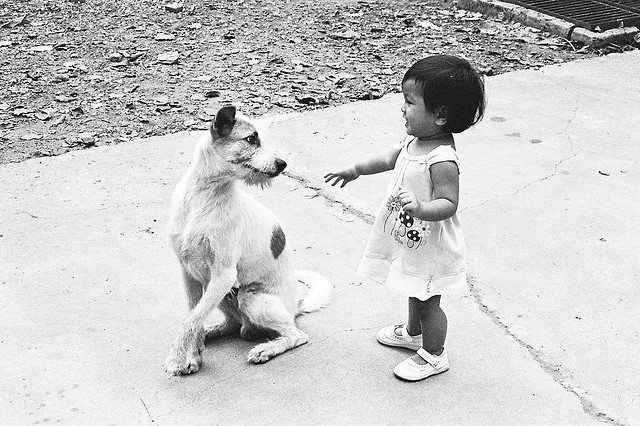How is anxiety treated by psychologists and other mental health professionals?
Many psychological treatments—such as relaxation training, meditation, biofeedback and stress management—can help with clinical anxiety. Depending on the cause of the anxiety, some people with anxiety disorders also benefit from supportive counseling or couples or family therapy. However, psychologists generally agree that the most effective form of treatment for an anxiety disorder is cognitive-behavioural therapy (CBT). Medications may also be helpful, and many people receive CBT and medication in combination.
Cognitive-behavioural therapy
CBT is a brief, symptom-focused treatment that identify and target the cognitive and behavioural aspects of anxiety disorders. Cognitive (i.e., mental) aspects of anxiety include anxious thoughts (e.g., “I’m losing control,” “I’m going crazy”), predictions (e.g., “I’m going to mess up my words and humiliate myself”) and beliefs (e.g., “Only weak people feel like this”). Obviously, emotions like fear and apprehension are important mental features of anxiety as well, and these features get targeted along with the thoughts, predictions and beliefs.
Behavioural aspects include complete avoidance (staying away from the situation altogether…like calling in sick for an important presentation at work), or subtle avoidance behaviours (to distract ourselves, e.g., talking more) or safety behaviours (habits to minimize anxiety and feel “safer,” e.g., always having a cell phone on hand to call for help).
Typically, CBT for an anxiety disorder consists of 10 to 15 weekly one-hour sessions. In the initial sessions, the person with the anxiety disorder works with the therapist to understand the person’s anxiety and related problems. The person’s symptoms of anxiety are assessed within a cognitive-behavioural framework, and the goals and tasks of therapy are established. The therapist will often propose a case formulation, where the typical triggers for anxiety symptoms are identified and targeted for treatment. Treatment is a collaboration between patient and therapist, where the target is the anxiety symptoms. As the therapy progresses, behavioural and cognitive “homework” tasks are assigned to help the person with the anxiety disorder learn skills to tolerate or reduce anxiety symptoms. As the symptoms improve, the therapist also focuses on underlying psychological or situational issues that may pose a risk for “relapse,” a term used to describe the return of symptoms. Homework assignments between sessions can include facing a feared situation alone or with help, recording (in a journal) thoughts and feelings in different anxiety-provoking situations, or reading relevant material. Following treatment, therapists sometimes schedule less frequent “booster” sessions to consolidate the changes.
What does CBT for anxiety disorders involve?
A standard component of CBT treatment is exposure therapy, which involves gradually exposing the person, either directly or through the person’s imagination, to his or her feared situation that triggers anxiety. For example, the person who fears large dogs will be asked to spend time interacting with smaller then gradually larger dogs, and the person who fears embarrassing himself or herself in social situations will be asked, with help, to attend gatherings and speak with others. A hierarchy of feared situations is made and worked through by the patient with help from the therapist.
The rationale behind exposure therapy is that by practicing exposure to their fears, people have the opportunity to learn (and believe!) for themselves that their fears are excessive and irrational, and that the anxiety decreases with more and more practice. This process is called habituation.

Because many people find it hard to face their fears, exposure therapy typically starts with exposing the person to situations that create only mild to moderate symptoms of anxiety, and gradually progresses to exposing the person to situations that create severe anxiety. In the case of someone who fears dogs, therapy may begin with the person discussing dogs, then progress to the person looking at photos of dogs, watching movies that showcase dogs and watching dogs from a distance, until eventually he or she can approach and pat different types of dogs.
Again, with repeated exposure, these situations begin to elicit less and less fear and anxiety for the person, and he or she feels less of an urge to avoid them. As the person makes progress in conducting exposures with the assistance of the therapist, he or she is increasingly requested to complete exposure tasks as part of homework between sessions. The time it takes for people to progress in treatment may depend on the severity of their fear and their ability to tolerate the discomfort associated with arousing their anxiety.
An important part of CBT is helping people with anxiety disorders to identify, question and correct their tendencies to overestimate danger and their perceived inability to cope with danger. Cognitive strategies are developed in combination with exposure therapy to help people recognize that their thoughts, attitudes, beliefs and appraisals can generate and maintain anxious states.
For example, people who fear dogs may have the mistaken belief that all dogs are dangerous, based on an earlier experience with a single dog, people with social phobia tend to overestimate the degree to which they are going to make social blunders and subsequently be judged and ridiculed.
With repeated practice in therapy and then as part of homework, people with anxiety disorders develop skills that enable them to identify anxiety-related thoughts and beliefs, identify common errors in their thinking, examine the evidence that supports and does not support their fearful beliefs, and develop healthier responses to the feared object or situation. Cognitive restructuring exercises are also introduced to help the person recognize why behavioural avoidance, reassurance-seeking behaviours and “safety” behaviours (e.g., the person who always carries a cell phone just in case he or she needs to call for help) are unhelpful long-term strategies.
CBT has been found to be effective for all the anxiety disorders. Most people experience a significant reduction in their symptoms and stay well after the treatment ends. Given the success of this therapy and its ability to reduce relapse, CBT is established as the first-choice psychological treatment for anxiety disorders.
What about recovery from anxiety?
When people begin treatment for an anxiety disorder, the first goal is to reduce and manage symptoms. The process of achieving this goal, known as “recovery,” often includes a combination of medication, cognitive-behavioural therapy (CBT) and supportive psychotherapy, and may also include other support such as occupational, recreation and nutrition therapy. Recovery also includes the way you apply the skills learned in treatment to real life situations. Ideas of what people hope to achieve through recovery are unique to each person. Long-term goals may include improved relationships with others, a full and satisfying work life, increased self-esteem and improved overall quality of life. Once recovery is underway, and each person is ready to focus on getting his or her life back to normal, the next step is “relapse prevention,” a plan developed with the therapist to manage symptoms if they re-appear.
—
We are here to help you.
For more information on our services, or for help on deciding which of our team psychologists to choose, don’t hesitate to contact our clinic coordinator at 514-337-2473, ext. 0, and it is with great pleasure that we will discuss with you the psychological services we can offer you.

